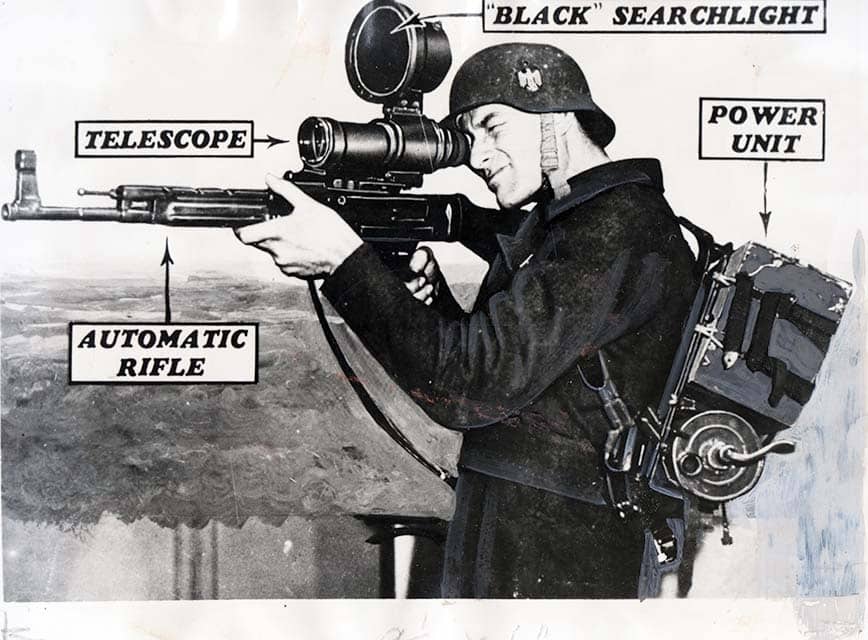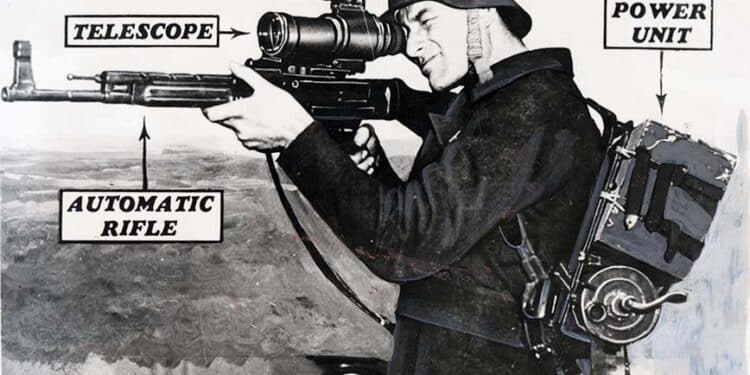By Tom Murphy
The ZG 1229, code named “Vampir,” was an infrared night scope developed during World War II for the German Wehrmacht for night operations. It was intended to be mounted on a Sturmgewehr 44 (StG 44). It was first used in combat in February 1945. Built at the C.G. Haenel Munitions plant at Suhl in Thuringia, Germany, a total of 310 units were issued by the end of the war. Its main drawbacks were its weight and bulk. It was too cumbersome to use in fluid situations; however, it worked well when in a fixed position.
The infrared scope and spotlight weighed a little over 5 pounds. The battery unit that was encased in a wooden box and carried on a harness on the back of the Nachtjager (night hunter) weighed 30 pounds. The battery that ran the image converter sat under the main battery box in a modified gas mask container. The whole package was strapped to the Tragegestell 39 (pack frame 1939). Ernst Leitz GmbH, located in Wetzlar, Germany, developed the complete package.

The searchlight contained an incandescent, tungsten filament light source that had a color temperature of 3200K. The light projected through a filter that only let infrared wavelength light pass. The telescopic sensor operated in the high infrared, not the low infrared which the human body emits, so it could not detect body heat. Eastern Front Russian fighters reported that the Germans were using it at night with the aid of “peculiar non-shining torches coupled with enormous optical sights” mounted on their rifles.
Close to the end of hostilities, the MG34 and MG42 machine guns were fitted with similar night vision optics. However, the war ended before many of these reached the front lines.
C.G. Haenel Munitions
The Vampir system was produced by C.G. Haenel Munitions. Carl Gottlieb Haenel, a Prussian gun factory commissioner, began weapons production in 1840 with the production of bicycles and weapons, a common combination in pre-World War I years. During that war, C.G. Haenel produced large quantities of the Mauser M98 rifle. After World War II, the factory was disassembled and transported to the Soviet Union as part of war reparations. Only air rifles and carbines were manufactured until 2008 when the Suhl Arms Alliance was formed with Merkel, and rifle production began again.












